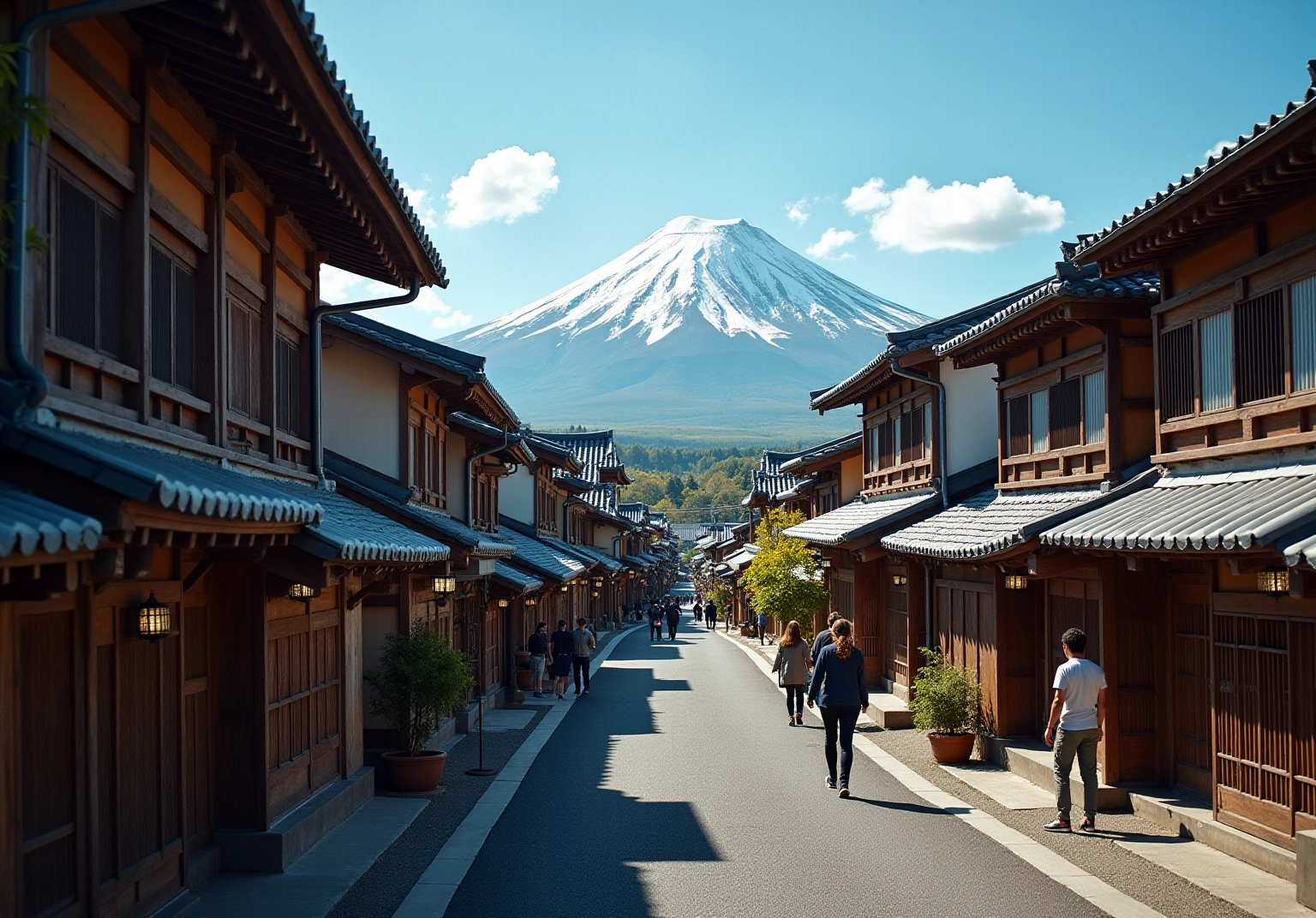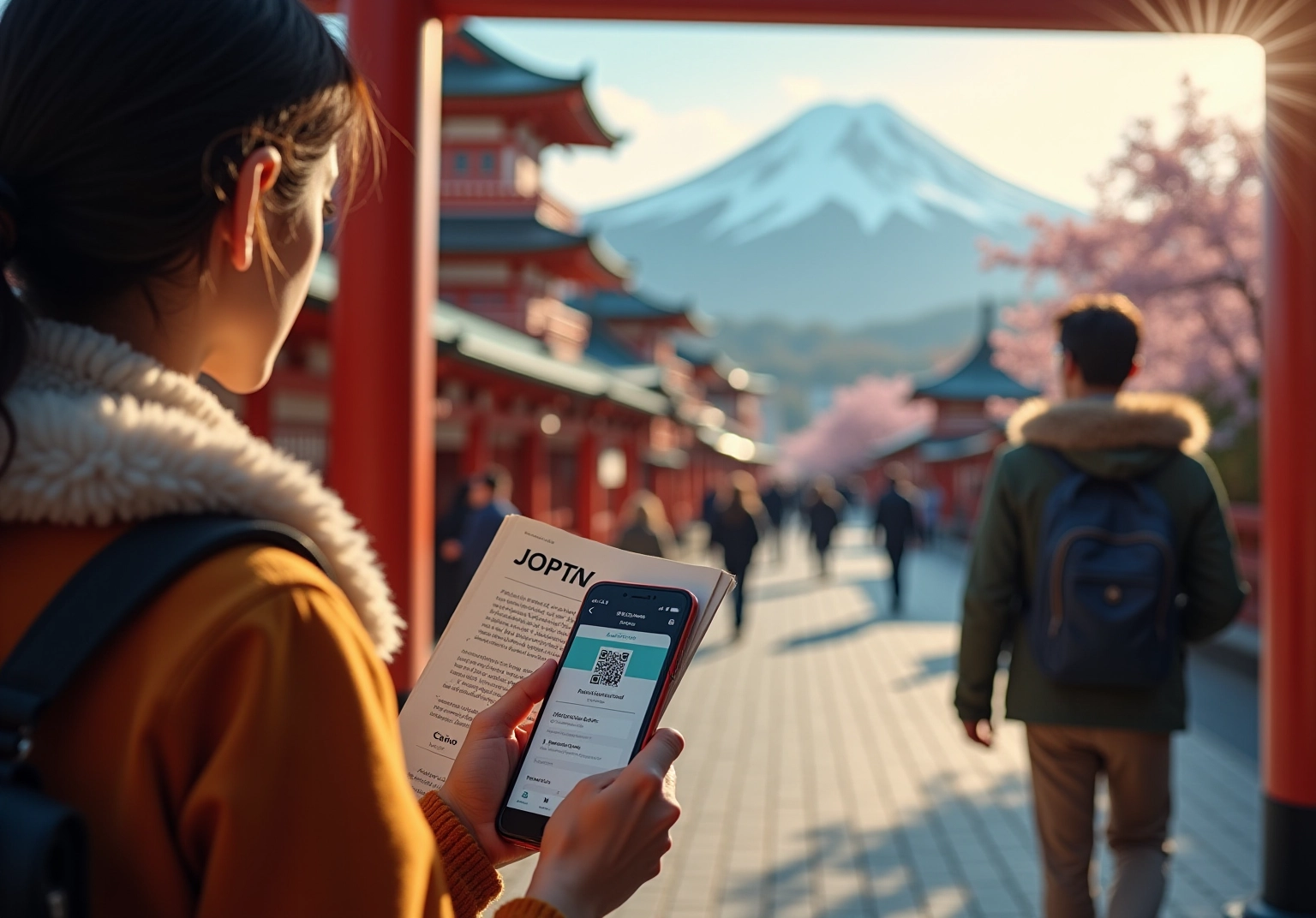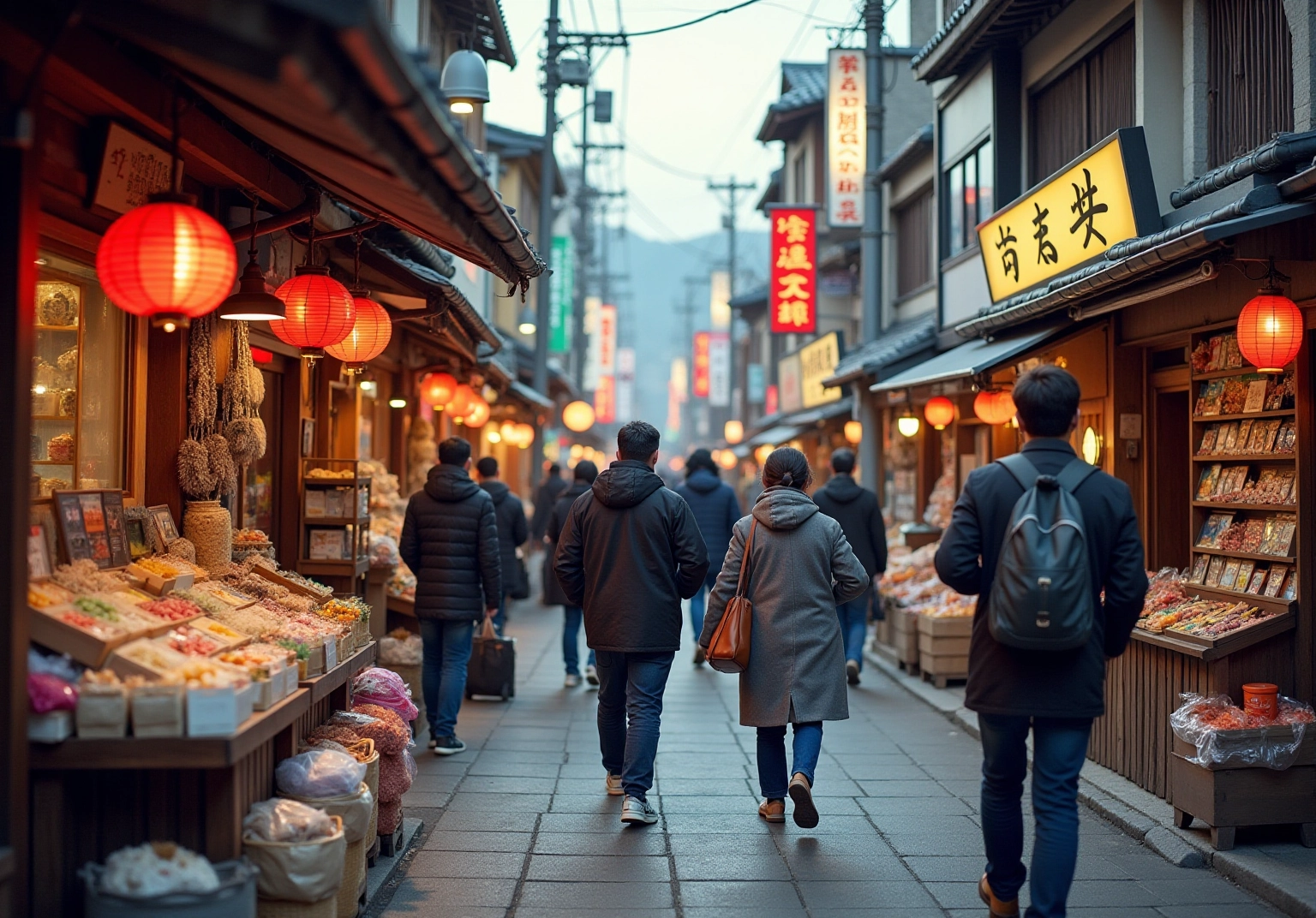Overview
The article dives into the fascinating implications of Japan’s tourist ban, showcasing how it plays a crucial role in tackling overtourism and preserving the rich cultural heritage of places like Kyoto and Gion. Imagine wandering through these beautiful areas with fewer crowds! It’s all about creating a more enjoyable experience for everyone.
You’ll find that the reduced number of visitors is easing overcrowding concerns, allowing you to truly soak in the atmosphere. Plus, there are some new compliance requirements for travelers to keep in mind. For instance, you’ll need to have:
- Mandatory health insurance
- An Electronic Travel Authorization system in place
These steps are designed to ensure that tourism remains responsible and sustainable moving forward. So, as you plan your next adventure, think about how these changes can enhance your journey!
Key Highlights:
- Overtourism in Japan, especially in Kyoto and Gion, threatens cultural heritage and community life.
- The Japan tourist ban has reduced visitor numbers, alleviating some concerns about overcrowding.
- 30% of foreign visitors reported experiencing overtourism at popular destinations before the ban.
- 63% of respondents are willing to pay more to help reduce overtourism and protect resources.
- Regulations in Gion limit access to certain areas to protect cultural integrity, with fines for violations.
- Mount Fuji will implement a daily climber limit and mandatory fees starting July 1, 2024, to manage tourism impact.
- Travellers to Japan in 2025 must have private health insurance and comply with new Electronic Travel Authorization requirements.
- Supporting local businesses and practising sustainable tourism can enhance the travel experience and benefit communities.
- Understanding regional customs is crucial for respectful interactions, especially in culturally sensitive areas.
Introduction
Japan’s cultural heritage is a treasure trove of beauty and history, but it’s facing some real challenges these days—especially in iconic spots like Kyoto and Gion, where overtourism is taking its toll.
As the country rolls out a tourist ban to tackle these issues, you have a unique chance to dive into Japan’s rich traditions while helping to preserve them.
But how do you navigate this evolving landscape of compliance requirements and sustainable practices? It’s a great question!
How can you ensure that your experiences positively impact local communities and maintain cultural integrity?
This article takes a closer look at the implications of Japan’s tourist ban and shares essential insights for responsible travel in 2025 and beyond.
Let’s explore together!
Explore the Impact of Overtourism on Japan’s Cultural Heritage
Overtourism in Japan is a real challenge for its beautiful heritage, especially in iconic spots like Kyoto and Gion, which has led to discussions around the Japan tourist ban. With the Japan tourist ban, the influx of visitors to these areas has decreased, alleviating concerns about overcrowding that disrupt community life and dilute traditional practices. Just think about the geisha districts, renowned for their rich history—they’re having a tough time keeping their authenticity intact with so many tourists around. This not only diminishes the experience for you as a visitor but also puts immense pressure on local communities and their cherished heritage.
Did you know that a recent survey found that 30% of foreign visitors to Japan have faced overtourism at popular destinations, particularly before the Japan tourist ban? This highlights how widespread the issue is! Local residents are increasingly worried about the economic downsides of travel, especially as they try to balance cultural preservation with the benefits of tourism. Interestingly, 63% of respondents expressed a willingness to pay more to help reduce overtourism or protect travel resources. This shows a proactive attitude towards sustainable practices!
Ichiro Takahashi, the travel commissioner, emphasized that reaching the ambitious goal of 60 million visitors by 2030 will require ‘making the right efforts.’ This includes sharing the travel benefits with lesser-known regions. As Japan aims to double its tourist arrivals, the importance of embracing sustainable tourism practices has become essential to safeguard its heritage, particularly in light of the Japan tourist ban.
Moreover, the loss of nearby transportation options, like trams in Kyoto, is a clear example of how overtourism impacts regional infrastructure. So, as you explore these incredible locations, remember to engage with them respectfully and thoughtfully. Your presence can significantly affect the very culture you’re eager to experience!

Identify Key Locations Affected by the Tourist Ban: Gion and Mount Fuji
Two key locations that have been notably affected by the Japan tourist ban are Gion and Mount Fuji. Gion, a historic district in Kyoto, has put in place some restrictions to protect its cultural integrity. Now, access to certain alleyways is limited to help reduce congestion, and if you’re caught taking photos on private roads, you could face fines of up to 10,000 yen! While you can still stroll through the main streets, it’s important to be mindful of the areas that are off-limits, especially with local residents raising environmental concerns about the impact of visitors.
Similarly, Mount Fuji has introduced new regulations aimed at managing tourism’s environmental footprint due to the Japan tourist ban. Starting July 1, 2024, there will be a daily limit of 4,000 climbers, along with a mandatory climbing fee of 2,000 yen. Can you believe that in 2023, more than 200,000 climbers visited Mount Fuji? This really highlights how necessary these new measures are! Yamanashi governor Kotaro Nagasaki emphasized that these regulations are crucial to prevent accidents and altitude sickness among climbers. Plus, keep in mind that the climbing entrance will be closed to traffic between 4:00 PM and 3:00 AM the following morning. So, if you’re planning a visit, understanding and following these restrictions is key to having a great experience!

Understand Compliance Requirements for Travelers in Japan
Planning a trip to the country in 2025? You’ll want to be aware of some important compliance requirements to ensure your adventure goes smoothly! One significant change is that all incoming tourists must have private health insurance. This is aimed at covering any medical expenses you might incur during your stay. It’s a smart move, considering the growing issue of unpaid medical bills from foreign visitors, which have reached about ¥61.35 million (that’s roughly $427,000!). Did you know that around 30% of travelers arrive uninsured?
But that’s not all! The new Electronic Travel Authorization (JESTA) system will be rolling out, requiring travelers from 71 visa-exempt countries to get online authorization before their trip. This system is designed to streamline immigration processes and enhance security, with full implementation set for the 2028 fiscal year.
Oh, and here’s a crucial tip: make sure to familiarize yourself with regional laws and regulations, especially in culturally sensitive areas like Gion and Mount Fuji. Ignoring these could lead to fines or even denial of entry! Staying informed about these evolving requirements is key to enjoying your travels. So, get ready for an exciting journey and make sure you’re prepared!

Adopt Best Practices for Sustainable and Respectful Tourism
If you’re looking to dive into sustainable and respectful travel in Japan, there are some best practices that can enhance your experience while also benefiting the local economy. Focusing on regional enterprises is key! Eating at family-run eateries and buying handmade crafts from local artisans not only supports the community but also helps you connect more deeply with Japanese culture. Did you know that in 2024, international visitors spent around ¥8.1 trillion? That really shows how impactful tourism can be on regional economies! Plus, the average expenditure per person was ¥226,851, highlighting the economic benefits of choosing local businesses. By supporting these enterprises, you can help sustain the livelihoods of those who preserve Japan’s rich cultural heritage.
And with the World Expo in Osaka expected to attract about 28.2 million attendees from April to October 2025, the importance of helping local businesses during such events is huge! It’s also essential to practice ‘leave no trace’ principles; minimizing waste and respecting natural environments is crucial—especially in delicate areas like Mount Fuji, where preservation efforts are vital. Understanding regional customs and etiquette is equally important to avoid any unintentional disrespect. For instance, knowing the significance of bowing or how to properly use chopsticks can really enhance your interactions with locals.
Experts agree that supporting local businesses not only enriches your travel experience but also fosters exchange and understanding. Julia Simpson, WTTC President & CEO, mentions that the Travel & Tourism industry in Japan is set to break all records, partly thanks to a favorable exchange rate for international visitors. Takao Nishina, Regional Manager North East Asia at GetYourGuide, points out the impressive growth in visitor numbers, which emphasizes the need for tourists to be mindful of their actions and choices. By being aware of your impact, you can play a vital role in preserving Japan’s unique cultural landscape for future generations.

Conclusion
The Japan tourist ban is not just a challenge; it’s a fantastic opportunity to tackle overtourism while cherishing the nation’s rich cultural heritage! By rolling out strategic regulations and promoting responsible travel, Japan is finding that sweet spot between welcoming visitors and protecting its unique traditions and communities. This thoughtful approach not only uplifts local residents but also enriches the experience for travelers eager to dive into Japan’s history and culture.
Throughout the article, we’ve explored key insights about the effects of overtourism on iconic spots like Gion and Mount Fuji. We’ve also discussed the compliance requirements for travelers in 2025 and shared best practices for sustainable tourism. Remember, having private health insurance, understanding the new Electronic Travel Authorization system, and respecting local customs are essential steps for ensuring a smooth and respectful visit. Plus, by supporting local businesses and embracing sustainable tourism principles, you can play a significant role in preserving Japan’s cultural landscape.
As Japan navigates the complexities of tourism management, it’s calling on you to engage thoughtfully and responsibly. Embracing sustainable practices not only enhances your personal experiences but also plays a vital role in protecting the cultural heritage that makes Japan such a unique destination. By prioritizing respect and sustainability, you can help ensure that future generations will have the chance to experience the beauty and authenticity of Japan!
Frequently Asked Questions
What is overtourism and how does it affect Japan’s cultural heritage?
Overtourism refers to the excessive influx of visitors to popular destinations, which can disrupt community life and dilute traditional practices. In Japan, this is particularly evident in areas like Kyoto and Gion, where the rich cultural heritage is under threat due to the overwhelming number of tourists.
What measures have been taken to address overtourism in Japan?
The Japan tourist ban has been implemented to reduce the number of visitors to certain areas, alleviating concerns about overcrowding and helping to preserve local communities and their cultural heritage.
How has overtourism impacted local communities in Japan?
Local communities are facing pressure to maintain their authenticity and traditions in the face of large tourist numbers. This situation not only diminishes the visitor experience but also raises concerns about the economic downsides of travel for residents.
What do visitors think about overtourism in Japan?
A recent survey found that 30% of foreign visitors to Japan have experienced overtourism at popular destinations. Additionally, 63% of respondents indicated a willingness to pay more to help reduce overtourism or protect travel resources.
What are Japan’s tourism goals for the future?
Japan aims to reach an ambitious goal of 60 million visitors by 2030. Achieving this will require efforts to promote sustainable tourism practices and share the benefits of travel with lesser-known regions.
How does overtourism affect regional infrastructure in Japan?
Overtourism can lead to the loss of nearby transportation options, such as trams in Kyoto, which impacts regional infrastructure and accessibility for both locals and visitors.
What can visitors do to engage with Japan’s culture respectfully?
Visitors are encouraged to explore Japan’s cultural locations thoughtfully and respectfully, as their presence can significantly affect the culture they wish to experience.


































